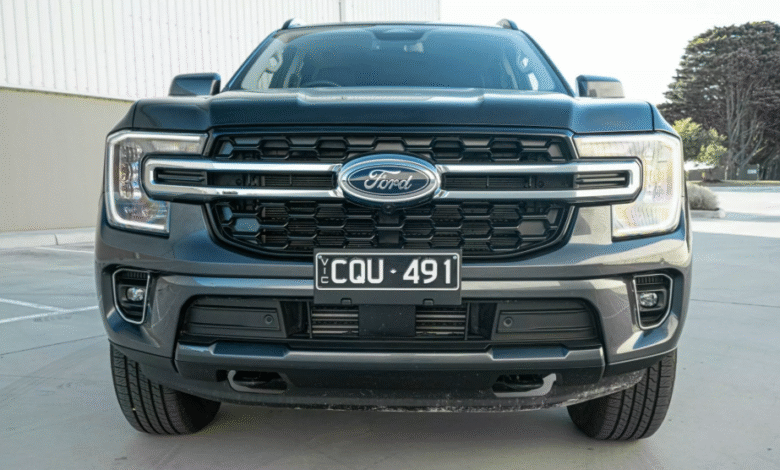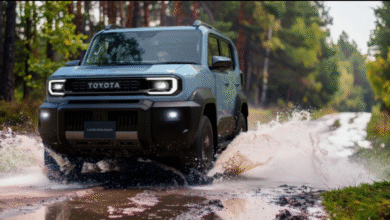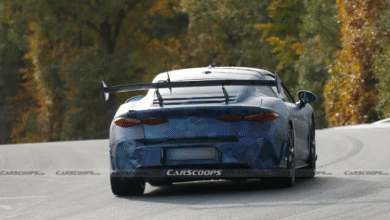2025 Ford Everest Review: Why This Rugged SUV Stays Out of the U.S. Market

The Ford Everest has been around for more than two decades, surviving through three generations and winning fans across Asia-Pacific, Africa, and Australia. Yet, strangely enough, it’s a nameplate you won’t see on American roads. Despite its close ties to the beloved Ford Ranger pickup, the Everest has never been offered in the U.S.—a curious decision considering America’s insatiable appetite for big, capable SUVs.
Built on the Ranger’s tough ladder-frame T6.2 chassis, the Everest is designed to rival body-on-frame SUVs like the Toyota Fortuner, Mitsubishi Pajero Sport, and Isuzu MU-X. Its appeal lies in combining rugged off-road ability and high towing capacity with the comfort and practicality of a family SUV.
Powertrain Options and Trim Levels
The latest Everest, unveiled in 2022 and built in Thailand, is offered with two diesel options: a 2.0-liter bi-turbo four-cylinder (207 hp, 369 lb-ft) and a 3.0-liter turbo V6 diesel (247 hp, 443 lb-ft). Sadly, enthusiasts won’t find a high-performance Everest Raptor, as the Ranger’s 3.0-liter twin-turbo petrol V6 hasn’t made the cut.
The lineup caters to a wide range of budgets. The entry-level Everest Ambiente starts around AU$60,589 (~$37,900), while mid-range trims like the Sport and Trend (our test model) provide a balance of price and features. At the top, premium models like the Tremor, Wildtrak, and Platinum cross AU$90,000 (~$56,600).
Interior and Tech
Step inside, and the Everest reveals a cabin nearly identical to the Ranger’s. Depending on trim, buyers can expect leather seating, an expansive 12-inch portrait infotainment screen with wireless Apple CarPlay and Android Auto, wireless charging, and multiple USB ports. While lower trims get a smaller 8-inch display, even the base models deliver plenty of practicality.
Cabin space is excellent, with three-row seating offered across the range. While the third row suits kids more than adults, folding it down opens up to 898 liters of cargo space, expandable to 1,823 liters with the second row folded. That’s plenty for road trips, camping gear, or towing equipment.
Driving Experience and Efficiency
On the road, the Everest Trend impressed with its smooth 2.0-liter bi-turbo diesel and 10-speed automatic transmission. While acceleration isn’t blistering (0–100 km/h in ~10 seconds), efficiency is solid at 8.6 l/100 km (~27 mpg) during real-world testing. The SUV also delivers a best-in-class 3,500 kg (7,716 lbs) towing capacity, appealing to adventurous buyers hauling caravans, boats, or trailers.
The Everest’s ladder-frame underpinnings give it durability, though it feels heavier and less agile than unibody rivals from Mazda, Kia, or Hyundai. However, Ford compensates with off-road credibility thanks to 4WD drive modes, a locking rear differential, and terrain settings for sand, mud, and snow.
Verdict
In Australia, the Everest is a runaway success. In 2024, it became the third best-selling SUV, behind the Toyota RAV4 and Mitsubishi Outlander, with sales skyrocketing nearly 76% year-on-year. It’s clear that this SUV has struck the right balance between family practicality, off-road ruggedness, and towing power.
So, why isn’t it sold in the U.S.? Ford seems intent on keeping the Everest focused on overseas markets, leaving Americans with the Explorer and the larger Expedition. But for families in Australia, Africa, and Asia-Pacific looking for a versatile SUV with the heart of a pickup, the 2025 Ford Everest is hard to beat.
👉 If you’re curious, check out Ford’s official page for the Ford Everest and compare it with its sibling, the Ford Ranger.




